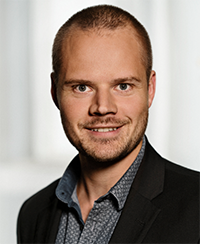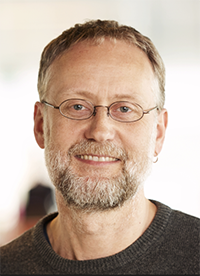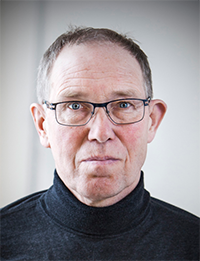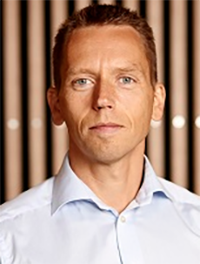Five teachers are nominated for the Teacher of the Year award 2018 at the Department of Computer Science.
All enrolled students at Computer Science and IT Product Development are eligible for voting and have the opportunity to participate in the poll. The students will receive an email with a link to the poll and we encourage every student to help us elect this year's winner.
The award is given to a teacher for a specific course held in the previous year (2017). Teachers can not win for two consecutive years. Selection of nominees is made by a committee consisting of representatives of the department's student associations (DSAU, SOFA) and student representatives from the department's council and committee.
The award will be presented af the Computer Science Day on May 18th at 1.15pm in the Peter Bøgh Andersen Auditorium.
There will also be presented two TA of the year awards as well as a student award, awarded to one or more students who have made a special effort to the benefit of the department in the past year.
Kasper Green Larsen - Foundations of Algorithms and Data Structures Kasper Green Larsen is nominated for the course Foundations of Algorithms and Data Structures. Kasper’s way of teaching is characterized by great involvement in student learning and enthusiasm for the overall subject – and also for the attention the important details in the specific subjects of the course. The FADS course had some initial design issues regarding student prerequisites, but Kasper managed to handle this very agile and elegantly to ensure that students came back on track with the learning goals. Kasper’s enthusiasm and active teaching style really reflects positively on the students, and this is also reflected in the course exercises through the TA’s. Kasper Green Larsen is nominated for the course Foundations of Algorithms and Data Structures. Kasper’s way of teaching is characterized by great involvement in student learning and enthusiasm for the overall subject – and also for the attention the important details in the specific subjects of the course. The FADS course had some initial design issues regarding student prerequisites, but Kasper managed to handle this very agile and elegantly to ensure that students came back on track with the learning goals. Kasper’s enthusiasm and active teaching style really reflects positively on the students, and this is also reflected in the course exercises through the TA’s. |
Henrik Bærbak Christensen - Software Engineering and Architecture  Henrik Bærbak Christensen is nominated for the Software Development and Software Architecture course. During the course Henrik managed to exemplify core parts of the curriculum through small stories from the industry - always in a very committed and enthusiastic way. Henrik is very committed to maintaining the students’ attention throughout the lectures and manages to balance the weight of theory and practical aspects in an elegant manner. The course is perfectly complemented by a large project where all students had ample opportunity to apply and implement the theory. That way everyone was able to feel the joy of good code - as well as the frustrations of bad. Henrik Bærbak Christensen is nominated for the Software Development and Software Architecture course. During the course Henrik managed to exemplify core parts of the curriculum through small stories from the industry - always in a very committed and enthusiastic way. Henrik is very committed to maintaining the students’ attention throughout the lectures and manages to balance the weight of theory and practical aspects in an elegant manner. The course is perfectly complemented by a large project where all students had ample opportunity to apply and implement the theory. That way everyone was able to feel the joy of good code - as well as the frustrations of bad. |
Eve Hoggan – Physical Computing Eve Hoggan is nominated for the Physical Computing course. Being an entirely new course, the design of the Physical Computing course seems very well planned and structured regarding the learning goals for the students. The individual lectures are very well aligned to practical assignments that allows the students to get relevant and interesting hands-on experience. The Physical Computing course is clearly an important core subject for IT Product Development students, and Eve is very attentive in conveying this perspective to the course participants. Eve Hoggan is nominated for the Physical Computing course. Being an entirely new course, the design of the Physical Computing course seems very well planned and structured regarding the learning goals for the students. The individual lectures are very well aligned to practical assignments that allows the students to get relevant and interesting hands-on experience. The Physical Computing course is clearly an important core subject for IT Product Development students, and Eve is very attentive in conveying this perspective to the course participants. |
Kurt Jensen – Introduction to Programming Kurt Jensen is nominated for the Introduction to Programming course. The programming course is characterized by being a verythoroughly thought out and well organized. The alignment between the content of lectures and the hands-on programming assignments during the course is very clear, and it also shows that Kurt has put a lot of attention to securing that teaching assistants were prepared and accessible to students whenever needed. The video recorded lectures is a great way to catch up with subjects that requires more attention and also great for exam preparation. Kurt Jensen is nominated for the Introduction to Programming course. The programming course is characterized by being a verythoroughly thought out and well organized. The alignment between the content of lectures and the hands-on programming assignments during the course is very clear, and it also shows that Kurt has put a lot of attention to securing that teaching assistants were prepared and accessible to students whenever needed. The video recorded lectures is a great way to catch up with subjects that requires more attention and also great for exam preparation. |
Anders Møller – Regularity and Automata Anders Møller is nominated for the Regularity and Automata course. Anders achieves to convey complex subjects in a very simple and understandable manner. His lectures were comprehensive, and the assignments corresponded extremely well to the curriculum. Anders gave the impression that he genuinely wanted his students to understand. This was clearly evident whenever someone asked a question, to which he would take time to ensure that not only did they understand the correct answer, but also why the answer is correct. Anders Møller is nominated for the Regularity and Automata course. Anders achieves to convey complex subjects in a very simple and understandable manner. His lectures were comprehensive, and the assignments corresponded extremely well to the curriculum. Anders gave the impression that he genuinely wanted his students to understand. This was clearly evident whenever someone asked a question, to which he would take time to ensure that not only did they understand the correct answer, but also why the answer is correct. |